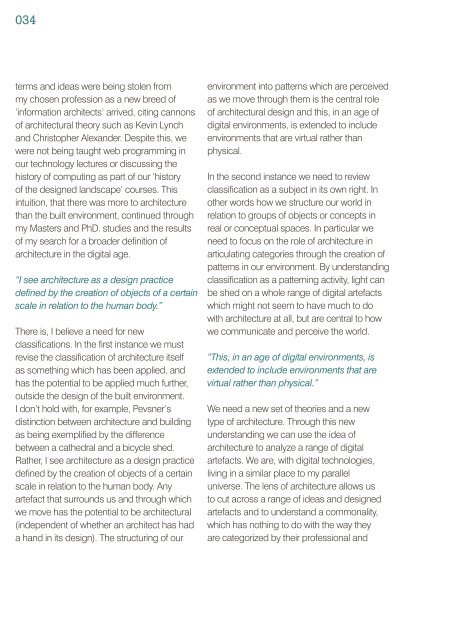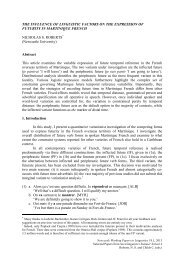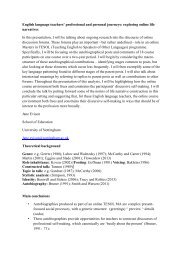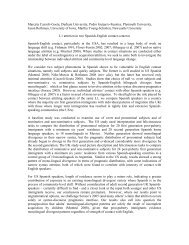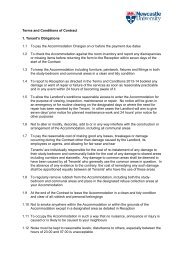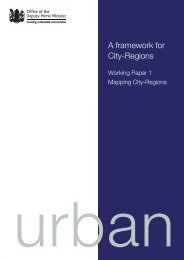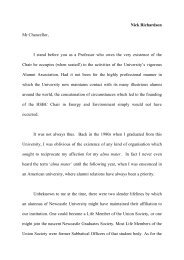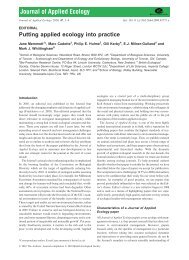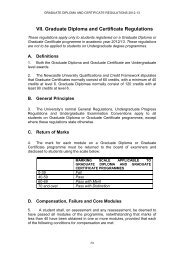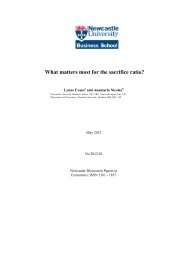APL Design Yearbook 2010-11 - Newcastle University
APL Design Yearbook 2010-11 - Newcastle University
APL Design Yearbook 2010-11 - Newcastle University
You also want an ePaper? Increase the reach of your titles
YUMPU automatically turns print PDFs into web optimized ePapers that Google loves.
034 Feature / Dr Martyn Dade-Robertson 035<br />
terms and ideas were being stolen from<br />
my chosen profession as a new breed of<br />
‘information architects’ arrived, citing cannons<br />
of architectural theory such as Kevin Lynch<br />
and Christopher Alexander. Despite this, we<br />
were not being taught web programming in<br />
our technology lectures or discussing the<br />
history of computing as part of our ‘history<br />
of the designed landscape’ courses. This<br />
intuition, that there was more to architecture<br />
than the built environment, continued through<br />
my Masters and PhD. studies and the results<br />
of my search for a broader definition of<br />
architecture in the digital age.<br />
“I see architecture as a design practice<br />
defined by the creation of objects of a certain<br />
scale in relation to the human body.”<br />
There is, I believe a need for new<br />
classifications. In the first instance we must<br />
revise the classification of architecture itself<br />
as something which has been applied, and<br />
has the potential to be applied much further,<br />
outside the design of the built environment.<br />
I don’t hold with, for example, Pevsner’s<br />
distinction between architecture and building<br />
as being exemplified by the difference<br />
between a cathedral and a bicycle shed.<br />
Rather, I see architecture as a design practice<br />
defined by the creation of objects of a certain<br />
scale in relation to the human body. Any<br />
artefact that surrounds us and through which<br />
we move has the potential to be architectural<br />
(independent of whether an architect has had<br />
a hand in its design). The structuring of our<br />
environment into patterns which are perceived<br />
as we move through them is the central role<br />
of architectural design and this, in an age of<br />
digital environments, is extended to include<br />
environments that are virtual rather than<br />
physical.<br />
In the second instance we need to review<br />
classification as a subject in its own right. In<br />
other words how we structure our world in<br />
relation to groups of objects or concepts in<br />
real or conceptual spaces. In particular we<br />
need to focus on the role of architecture in<br />
articulating categories through the creation of<br />
patterns in our environment. By understanding<br />
classification as a patterning activity, light can<br />
be shed on a whole range of digital artefacts<br />
which might not seem to have much to do<br />
with architecture at all, but are central to how<br />
we communicate and perceive the world.<br />
“This, in an age of digital environments, is<br />
extended to include environments that are<br />
virtual rather than physical.”<br />
We need a new set of theories and a new<br />
type of architecture. Through this new<br />
understanding we can use the idea of<br />
architecture to analyze a range of digital<br />
artefacts. We are, with digital technologies,<br />
living in a similar place to my parallel<br />
universe. The lens of architecture allows us<br />
to cut across a range of ideas and designed<br />
artefacts and to understand a commonality,<br />
which has nothing to do with the way they<br />
are categorized by their professional and<br />
disciplinary boundaries, at a time when a new<br />
generation of designed objects is emerging,<br />
which have yet to find a framing discipline of<br />
their own.<br />
Adapted from:<br />
“The Architecture of Information: Architecture, Interaction<br />
<strong>Design</strong> and the Patterning of Digital Information”<br />
M. Dade-Robertson, Routledge: 20<strong>11</strong>.


